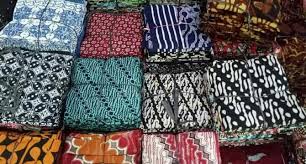KEUNGGULAN KOMPARATIF TEKSTIL DAN PRODUK TEKSTIL INDONESIA TERHADAP TIONGKOK DALAM ASEAN-CHINA FREE TRADE AREA: TANTANGAN BAGI INDONESIA
Keywords:
ACFTA, TPT, ChallengesAbstract
The focus of this study is the challenges of Indonesian Textile and Textile Product (TPT) to China in the framework of ASEAN-China Free Trade Area (ACFTA) which seen from the comparative advantage. Theoritically, ACFTA should have a positive impact for the members since there is a tariff removal to 0%. TPT is one of the industries that has a large contribution to Indonesia’s trade. However, TPT from China dominates over local TPT. The purpose of this study is to find out challenges of Indonesian TPT in the ACFTA framework. This research was done by qualitatively in explanative design. The results of this study are the difficulty of obtaining raw materials, outdated production machine, the difficulty of applying Indonesia National Standard to the textile industry and high loan prime rate. These are the main challenges for Indonesian textile products. This research shows that Indonesia doesn't have the comparative advantage yet. Therefore, the strategy of the government as well as the TPT producers is needed in facing the challenges so it would improve the competitiveness of the Indonesian textile industry
Downloads
References
Creswell, J.W. (2014). Research Methods. California: SAGE Publications.
Hastedt, Glenn., et.al. (2014). Cases in International Relations: Pathways to Conflict and Cooperation. California: SAGE.
Salvatore, Dominick. (1997). Ekonomi Internasional. Terjemahan oleh Drs. Haris Munandar. Jakarta: Erlangga.
JURNAL
Hermawan, Iwan. (2011). Analisis Dampak Kebijakan Makroekonomi Terhadap Perkembangan Industri Tekstil dan Produk Tekstil di Indonesia. Buletin Ekonomi Moneter dan Perbankan.
ARTIKEL
ASEAN-China Free Trade Area. (2016). ACFTA Business Portal. Diakses melalui http://www.aseancn.org/index. php?m=content&c=index&a=show&catid=267&id=84 pada 29/8/2019.
ASEAN-CHINA FREE TRADE AREA. (2012). Kementerian Perdagangan RI. Diakses melalui http://ditjenppi. kemendag.go.id/index.php/asean/asean-1-fta/asean-china pada 30/8/2019.
Cotton Contamination Surveys. (2016). International Textile Manufacture Federation. Diakses melalui https://www.itmf.org/publications/free-downloads/cotton-contamination-surveys pada 8/11/2019.
Indonesia Textiles and Clothing. World Integrated Trade Solution. Diakses melalui https://wits.worldbank.org//Cou ntryProfile/en/Country/IDN/Year/2015/TradeFlow/Import/Partner/ALL/Product/50-63_TextCloth pada 20/9/2019.
Laporan Tahunan BI. (2014). Bank Indonesia. Diakses melalui https://www.bi.go.id /id/E404.aspx?RequestedUrl=https://www.bi.go.id:443/id/perbankan/suku-bunga dasar/Default.aspx
Lending interest rate (%) – China. (2018). World Bank. Diakses melalui https://data.worldbank.org/indicator/FR.INR.LEND?locations=CN&view=chart pada 20/12/2019.
Sejarah. Asosiasi Pertekstilan Indonesia. Diakses melalui http://indonesiatextile .id/sejarah/ pada 3/11/2019.
Suku Bunga Dasar Kredit. (2018). Otoritas Jasa Keuangan. Diakses melalui https://www.ojk.go.id/id/kanal/perbankan/Pages/Suku-Bunga-Dasar.aspx pada 20/12/2019.







